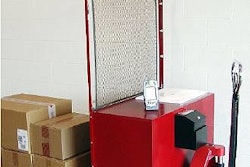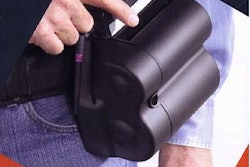
The 2006, the fifth and largest IDTechEx “RFID Smart Labels USA” event, was attended by more than 500 delegates from 31 countries, 20% more attendees than 2005. The event covered how RFID is progressing in a wide variety of industries. This report from IDTechEx's Raghu Das highlights a few of the key lessons of the conference.
Universal interrogators needed, but who is listening?
General Electric and the US Department of Defense both stated their need for a single interrogator which can work at the different frequencies. Both need to use different frequency systems, depending on the products tagged and the desired range, obstructions encountered etc, and so far they have implemented LF, HF, UHF and active RFID. However, the interrogator (reader and reader/writer) manufacturers are still a long way from achieving this.
Mismatch of supply and demand
IDTechEx's Peter Harrop gave the opinion that there is indeed a big mismatch between supply and demand in the booming RFID market. There are about 1ꯠ suppliers in various points of the RFID value chain. However, he believes that many of them address lackluster opportunities and even cash traps. Meanwhile there is an almost total lack of truly global system integrators, for example.
Tyson Foods' RFID challenges
Tyson Foods, the world’s largest processor of chicken, beef and pork, reported how it has successfully implemented UHF RFID to comply with the Wal-Mart RFID mandate.
A major problem for Tyson is that its meat must pass through a metal detector as it leaves them for retailer distribution centers. An RFID tag applied before this stage would set off the alarm. This has prevented Tyson benefiting from the RFID system within the manufacturing process. Can someone help?
Looking into the future, Tyson Foods wanted to see “food-friendly” RFID tags at lower prices. Beyond compliance, they wait for chipless tags, which would enable cost-effective tagging of all the products they manufacture.
P & G/Gillette sees 'phenomenal' RFID results
Gillette’s new five-blade razor Fusion system,, launched this year around the Super Bowl, is the company's first product where RFID is applied to all the product cases and pallets. These are shipped to 400 locations. The cases are tagged as they are packed. The tags are read as they arrive at retailer stores and at the retailers’ box crushing machines, at which point Gillette knows all the product is now on the shelf. Gillette reported its RFID results as “phenomenal."
Some turn to item level
Alastair McArthur of Tagsys reported industry statistics of the sales of counterfeit drugs at $39 billion, or about 11% of total pharmaceutical sales. Tagsys supplies Pfizer with HF tags that are applied to bottles of Viagra destined for the United States, a drug with a massive counterfeiting problem. The product is made in France and shipped to the US. The project is in full swing, with millions of tags being used this year. HF has been chosen because Tagsys achieves an unusually high read rate and absence of false reads and the tags are the smallest available for the job in hand, so they fit on even the smallest packages without deterioration of performance. But there are other reasons too.
RFID in China takes off in 2006
Victor Claudio from SparkICE and Dr. Wenfeng Wang from the Chinese Government RFID Group both updated the audience on how they see RFID beginning to take off in China this year. They believe that one standard is not appropriate for all, and therefore China will use appropriate frequencies and standards for each application.
A new approach: UHF labels with near-field coupling
Rich Fletcher, CEO of Tagsense, said that that several companies are now developing UHF tags working on near-field induction, like an HF tag. In this case, the UHF inlay uses a coil as the antenna. Even though most performance is achieved using a dipole antenna at UHF, the overlap between the two physics is gradual, and some benefits of near-field antennas can be realized at UHF. He considered the key benefit of a near-field antenna rather than one working at far field to be that it is more tolerant of metal and fluids. Rich said he has seen UHF tags working at up to 1-meter read range with a near-field antenna.
Chipless RFID breakthroughs
There was strong interest in chipless technologies, including users who seek a cheaper alternative to silicon chip tags, but also recognizing other potential advantages such as thinness, flexibility, damage tolerance and eventually printing directly onto products and packaging, just as more than 85% of bar codes today.
For the complete report with more details, visit IDTEchEx.


























